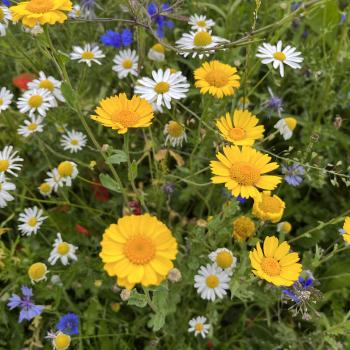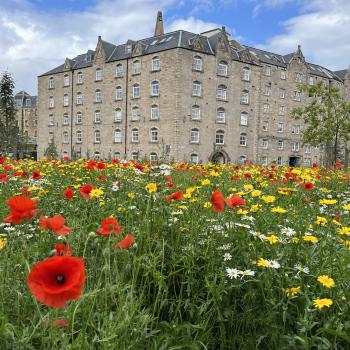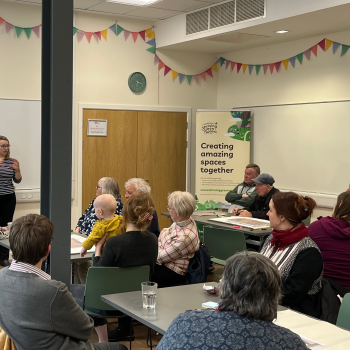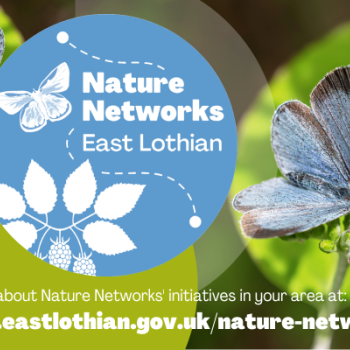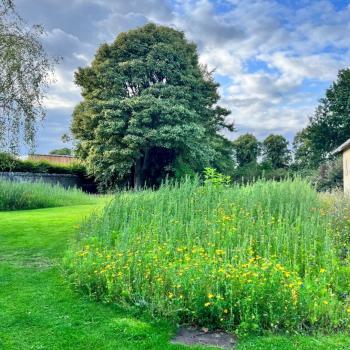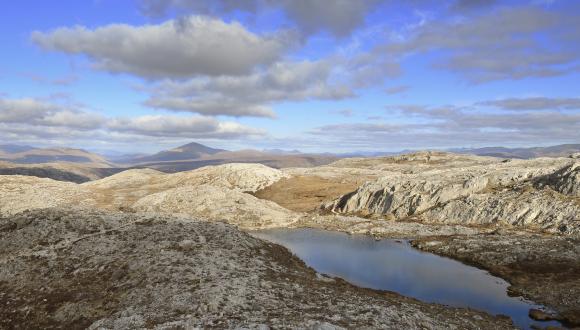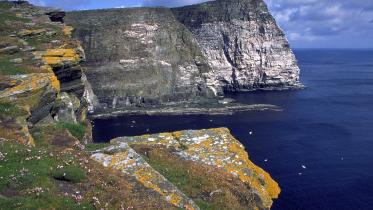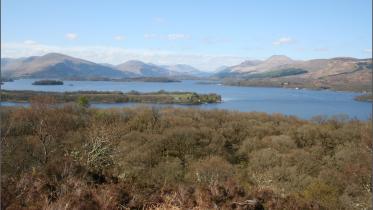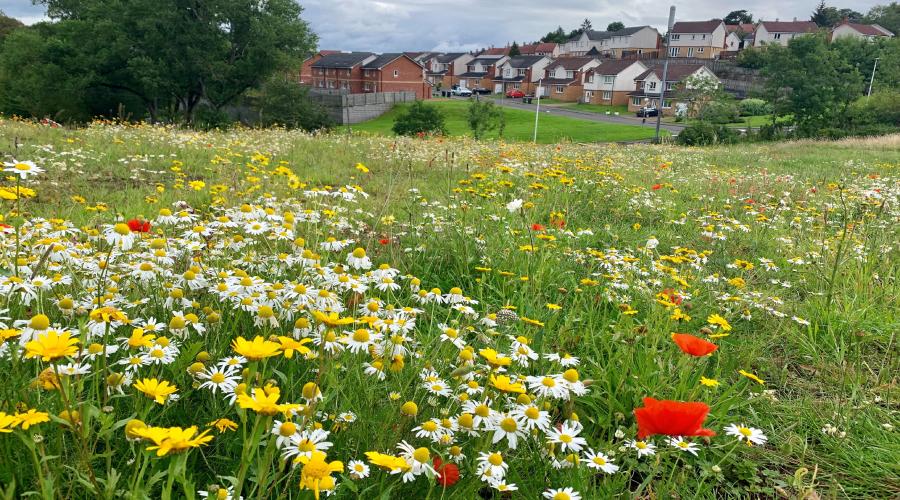
Nature Networks - Case Studies
There is lots of good work already underway in spatially identifying nature networks and delivering projects on the ground that contribute to connectivity.
There is already some great work underway in planning, developing and delivering Nature Networks in Scotland.
Here, you will find an array of case studies, each demonstrating important aspects of Nature Networks.
They vary from planning regional scale networks, to delivering individual projects that can contribute to a broader Nature Network.
For each, they look to share how the project was facilitated, the benefits and challenges they experienced and importantly how they achieved or utilised the co-designed delivery principles set out in the Nature Network framework in their work.
You’ll also find contact details at the end of each case study, so feel free to reach out to them for more information and to further share learning and experience.
Edinburgh Nature Network
Delivery Partners: City of Edinburgh Council and Scottish Wildlife Trust
Time scale/span:
- Development – 2019-2021
- Pilot Delivery – 2022-2024 (with further delivery being planned)
Funding sources/estimated rough cost: Future Parks Accelerator grant (funded by the National Trust and National Heritage Lottery Fund) for the Thriving Greenspaces Project funded staff (ecologist) and consultant (GIS) to develop the Nature Network and deliver pilot nature network project. This was matched funded by the Council and also NatureScot Nature Restoration Fund (direct allocation).
Greenspace Scotland - £41,000 (nature restoration in parks fund)
Summary of project:
Edinburgh Nature Network is a long-term strategic approach to manage, restore and enhance the environmental landscape of Edinburgh. It highlights opportunities to take action across the city, using natural solutions to address the threats of biodiversity loss and climate change. The Nature Network restores our connections with nature, making us a part of it once more, and enhances the ability of the city to adapt to climate change, providing multiple ecosystem services to benefit wildlife, human society and the economy.
Its development was led by the Scottish Wildlife Trust, with GIS support from University of Edinburgh as part of the Thriving Green Spaces project. Thriving Green Spaces was led by City of Edinburgh Council and funded by the Future Parks Accelerator (FPA) programme, to build a sustainable future for the UK’s urban parks and green spaces. This is the first urban Nature Network to be developed in Scotland
The first part of the project identified 200 plus actions across the city that would create our Edinburgh Nature Network. The pilot for our Nature Network is in Leith – where we are delivering the actions in the area in partnership with Council colleagues, local organisations and the community.
How was the project delivered, referring to the Nature Network Framework principles:
Participation, engagement, and communication; Engagement with partnerships and communities will be inclusive, empowering and facilitate bottom-up activity. Simple and unifying messaging on Nature Networks across partners with a focus on building people’s connection with nature and fostering stewardship.
The first phase of the Edinburgh Nature Network was the development of our maps of 200+ actions city-wide. This was undertaken through the mapping of seven ecosystem services, seven habitats and workshops with both professional and community stakeholders. A co-design approach was taken ensuring those on the ground inputted to the design and development of the map. Partnership is key – with the Edinburgh Nature Network working group spanning more than 18 eNGOs and other organisations across the city - such as through the need for input from all within tracking, recording and monitoring, which in turn encourages further action which will improve the city for both nature and society.
Moving forward, delivery of actions has a bottom-up focus empowering local people by supporting the creation of Friends of Groups and working with schools to take ownership of their local greenspace.
Knowledge and skills; Nature Networks will be developed using and sharing local knowledge, experience and best-practice, and will support the growth of green skills and jobs. The co-design approach to developing the Edinburgh Nature Network map allowed us to ground truth and fill in gaps using expertise and knowledge from local people.
In delivering the actions, training has been central through working with The Conservation Volunteers (TCV), Friends of Groups, and outdoor learning.
This development phase links with all six themes of the delivery principles in the nature networks framework through our open governance and engagement across organisations and communities to ensure our nature network included the expertise of local knowledge alongside the mapping of data to give our evidence-based map of actions. Our work with the FPA allowed us the resource for development, and our partnership with planning and biodiversity colleagues incorporated policy at all stages.
We continue to take forward these six themes as we move to delivery of our pilot (and ongoing delivery areas). Co-design is integral to delivery of these actions and long-term monitoring of success, as we seek sustainable funding and ensure our nature network aligns with updated planning and policy guidance.
Data, mapping and monitoring;
- 200+ nature network actions illustrated on our online Edinburgh Nature Network (ENN) storymap, split by all districts in the city highlighting a range of actions identified to improve biodiversity and increase connectivity through stepping stone habitats across 7 habitats and ecosystem services.
- This allows local groups and organisations to easily access our Nature Network and become involved in projects and actions
- The data informing these opportunities and actions were derived from information held by partner organisations and workshops with 30 different organisations, including SWT and the University of Edinburgh
- The locations chosen for our pilot delivery of the ENN in Leith were based on ecological surveys of spaces with low biodiversity in addition to ecological information which was held internally and considered existing user groups, accessibility and visitation of these spaces
Policy and Mainstreaming;
- Nature Network developed in partnership with Biodiversity Officer and planning colleagues
- Nature Network developments are discussed with our cross-departmental Nature Recovery and Climate Adaptation working group which comprises employees from Climate Ready Edinburgh Plan, Edinburgh Biodiversity Action Plan, and our Green Blue Networks Strategy.
- Our Nature Network title has been included within event advertising and signage to raise awareness of the project across colleagues, stakeholders and the wider public.
Financing and Resourcing;
- External funding allowed us to develop our Nature Network to this point and we will continue to seek funding to support the expansion of our pilot project of the Nature Network to ensure its longevity.
- Our Nature Network also aligns with Naturescot awarded FIRNS funding.
Key benefits/improvements made:
- Map of actions
- Collaborative working across City of Edinburgh Council departments – including Housing, Transport, Maintenance, Education, Parks, Forestry, Planning
- Draft monitoring and evaluation framework fed into by Edinburgh Nature Network working group (made up of 18+ organisations and NGOs in Edinburgh)
- Delivery of Leith actions and creation of visual plan to demonstrate how to deliver nature networks on the ground
- Applying Biodiversity Net Gain assessments to this delivery to provide evidence of direct, measurable increases in Biodiversity
- Core Leith group of organisations and community members now signed up to our mailing list and getting involved in actions across the area
- City-wide meadow management with The Conservation Volunteers (TCV)
- Supporting and encouraging the formation of new Friends groups through training and engagement with the City of Edinburgh Council and partners to ensure the longevity of interventions
- Supported the set-up of Wilding Wee Spaces pilot in Leith – a programme led by Outdoor Learning colleagues, focussed on each cluster of schools in Edinburgh have an area of public land local to them where pupils can have nature-based sessions and undertake conservation activities that they have designed
Challenges/barriers overcome and how:
- Funding – Future Parks Accelerator from Greenspace Scotland
- Staff resource
- Applying metrics for monitoring and evaluation which can be undertaken at a citizen science level and provide useful data
- Delivering the ENN in a variety of complex habitats as Edinburgh includes both urban and rural landscapes. Ensuring partnerships across Council departments and with external organisations addresses this additional complexity
More information can be found on the Edinburgh's Nature Network website.
Contact: [email protected]
Cairngorms Connect
Delivery Partners: Wildland Limited, Forestry and Land Scotland, RSPB, NatureScot
Time scale/span: 200 years
Funding sources/estimated rough cost: A core team (6.2 FTE), underwritten by partners £386k/annum (2024), commencing 1 January 2024.
Summary of project:
Cairngorms Connect stretches over 60,000 hectares and works to realise common aspirations for the landscape between the partnership organisations. The project is delivered by a partnership of neighbouring land managers including RSPB, Wildland, Forestry and Land Scotland, and NatureScot.
The Cairngorms is a landscape of ancient woodlands intersected by rivers and lochs, encircling an Arctic-like mountain massif. There are extensive tracts of blanket bog, wetlands and woodland bogs. The health of ecosystems found in the Cairngorms is not as good as it could be, due the impacts of grazing from wild deer, preventing natural regeneration, degraded peatlands and modified rivers. The project is committed to a 200-year vision and focuses on sequestering carbon, restoring & promoting natural processes and building resilience to climate change.
By 2030, the Cairngorms Connect partnership will be a leading ecological restoration project in Europe – for nature, climate, and people. It will be the exemplar of partnership working between private, government, and charity interests - essential for us to withstand the challenges of the nature crisis and climate emergency. The partners will deliver ecological restoration at scale, driven by social benefits, as much as climate and biodiversity benefits, and backed up by robust scientific evidence.
How is the project delivered in relation to the Nature Network Framework principles:
Governance and decision making; Governance of Nature Networks will be transparent, democratic and accountable and with inclusive and diverse representation. There will be a focus on empowering and equipping delivery partners from across sectors.
Working in partnership at scale – statutory bodies, a private landowner, and an eNGO managing together, constructively, and creatively; working in a supportive, trusting, and constructive way; strong financial governance; promoting the achievements of the individual partners and their respective brands, and celebrating the benefits of collaboration.
The Partnership is not driven by species targets but instead concentrates on creating a natural, wilder landscape for a wide range of species to flourish without significant intervention. The Cairngorms Connect area does however attract other organisations who wish to enhance species populations e.g. Saving Wildcats reintroductions and Pine hoverfly reinforcement.
Participation, engagement, and communication; Engagement with partnerships and communities will be inclusive, empowering and facilitate bottom-up activity. Simple and unifying messaging on Nature Networks across partners with a focus on building people’s connection with nature and fostering stewardship. Scotland’s public bodies will be exemplars, supporting the delivery of Nature Networks on their land.
Involving communities –each partner, working within an agreed framework, offer original, genuine and exciting opportunities for engagement through a supported menu of options for engagement and involvement. These including providing local economic benefits and building skills and are supported by the CC Communications and Involvement Group. Cairngorms Connect has successfully delivered an annual conference for people working for the CC partners, and a separate event for local communities.
Knowledge and skills; Nature Networks will be developed using and sharing local knowledge, experience and best-practice, and will support the growth of green skills and jobs.
Each partner organisation has its own staff on ground, amounting to around 50 – 55 full-time employees (FTE). The partnership has appointed nine FTE to service partnership for the period of 5 years. CC regularly organises Knowledge Exchange visits where partners can learn from the extensive knowledge and experiences of the other partners in Cairngorms Connect. CC employs an apprentice wildlife manager to support their development in attaining relevant skills, experiences and qualifications. Many projects in the CC are delivered by local businesses bringing investment into local green jobs.
Our latest film explores the relationships that intertwine people with the inspiring landscapes of Cairngorms Connect; from improving our mental wellbeing to sustaining businesses and creating jobs.
Data, mapping, and monitoring; We will be adaptive in our approach to delivering Nature Networks and use the opportunity to improve our understanding of developing effective ecological connectivity. Monitoring approaches for Nature Networks will be developed with, and for, stakeholders to inform management and action that maximises effectiveness of the network. We will employ innovation and best practice in data collection, management and use. Mapping and use of data will be collaborative and holistic in approach.
Collaborative science – monitoring nine ‘200-year’ indicators; developing a strong partner-led science programme; hosting academic partners on our terms; supported by the CC Scientists’ Working Group. This includes supporting PhD research, and publishing work in scientific literature. Monitoring plays an important role in informing managements across CC area.
Cairngorms Connect: Woodland Expansion
In this film ecologist Ellie Dimambro-Denson talks about the work taking place to expand the range of native woodlands within the project.
Finance and resourcing; Public and private funding and finance will be delivered through properly resourced, clearly directed, long-term, simple and accessible means.
Cairngorms Connect combines funding from natural capital, corporate support, private funding, and grant aid, to support the full programme of work acting as an exemplar in the role of ‘Green Finance’ in supporting ecological restoration. The programme is also exploring Lottery Fund opportunities.
An economic indicator is used to measure the direct and additional economic impact of the Cairngorms Connect project on the economy of the local area. The real market economic impact can be measured in terms of jobs and value added to the local economy.
Key benefits/improvements made:
There are direct links from the CC themes and Scottish Biodiversity Strategy to 2045 vision and outcomes. As the UK’s foremost ecological restoration partnership with a proven record of delivery since 2014:
- Non-native conifer removal 2985ha - woodland condition and conversion to native woodland
- Pinewood field layer management - 597ha - woodland condition
- Pinewood plantation naturalisation - 1555ha - deadwood creation, woodland condition
- Peatland restored - 955ha
- Natural floodplain restored - 20ha
- New native woodland planted - 1185ha
- 59 FTEs employed in nature restoration
- Deer population management – red deer population maintained below 5/km² across 60,000ha since 2014
- £1.4 million spent locally on nature restoration
- Diverse, healthy, resilient Ecosystems will be and deliver a wide range of ecosystem services.
Challenges and barriers overcome and how:
- Collaboration is beneficial improving contract value for money through packaging of works for contractors, and also for marketing of project successes. As a partnership, the team can interpret what is happening on a much larger scale and collaboratively promote their message with greater influence.
- There is a need for incentives that encourage (or are scaled to favour) the removal of barriers to restoration: reward work at a big scale; reward connected holdings, where land is contiguous and management creates a seamless landscape for wildlife; reward long-term commitment.
- There is need for more funding for floodplain and river restoration, which is an important area for climate change adaptation.
- The fixed timeframes of the funding has presented a challenge with the capacity to spend the money in time. There is need for commensurate support for delivery of work when there is a big budget to spend.
- Large-scale nature restoration brings local economic benefits through the creation of new posts to support the partnership and land management jobs. There are direct and wider employment opportunities associated with ecotourism from the project and the recreational opportunities.
- The biggest challenge has been where neighbouring estates are impacted by the level of deer reduction where they maintain a stalking interest on their own land. The reduction in deer numbers has led some neighbouring estates to change their focus away from stalking.
- Controlling deer to deliver tree recovery at a particular density within a particular timeframe is difficult in remote locations and high altitudes, and where there is poor seed source.
- Controlling deer populations, and lessening the impacts from wild grazing, is the fundamental intervention for achieving the aims of the project. As deer have no natural predators nowadays in Scotland, control will require ongoing direct intervention.
More information can be found on the Cairngorms Connect website.
Contact: [email protected]
Improving Nature Networks for East Lothian’s Communities: Enhancing Nature Networks and Biodiversity in our Parks and Greenspaces
Delivery Partners: East Lothian Council
Time scale/span: 4 Months (1st April – 31st July 2023)
Funding sources/estimated rough cost: Funded by the Scottish allocation of the Levelling Up Parks Fund provided to the Scottish Government by the UK Government and managed on behalf of the Scottish Government by Greenspace Scotland.
Cost of this project: £23,500
Summary of project:
‘Nature Networks East Lothian’ is a project developed by East Lothian Council to identify, explore, provide advice on and deliver nature network opportunities supported by our communities, in suitable areas of Council owned and managed parks and greenspaces across East Lothian’s towns and villages.
The objective of the project was to identify areas which have the potential for development of enhanced and connected nature networks and biodiversity enhancements with community support and produce an Action Plan which the Council will aim to deliver over the coming years, bringing a wide range of benefits to nature and people.
How was the project delivered in reference to the Nature Network Framework principles:
Participation, engagement, and communication: Simple and unifying messaging on Nature Networks across partners with a focus on building people’s connection with nature and fostering stewardship. Engagement with partnerships and communities will be inclusive, empowering and facilitate bottom-up activity.
We produced a distinctive ‘Nature Networks East Lothian’ brand for the project to help build awareness and a recognisable identity. This was used in communication materials such as a dedicated Nature Networks page on East Lothian Council’s website as a central hub of information about the project, as well as news releases across the Council’s news page and social media.
Involving the local community in this project was crucial in the action planning process. By gathering the views of local people we ensured that the nature network actions proposed were supported by local people. We undertook a public consultation which aimed to help the Council to identify opportunities where nature and biodiversity can be enhanced, and which nature networks could be expanded across East Lothian’s parks and greenspaces in our towns and villages.
The types of nature enhancements and natural habitats people supported and commented that they would like to see enhanced in their local areas came from the following suggested options:
- Hedgerows, shrubs and bushes
- Tree planting
- Street trees
- Woodland habitat
- Meadows
- Naturalised grassland
- ‘Wee forests’ / ‘tiny forests’
- Pollinator friendly planting
- Raingardens
- Bog gardens
- Wetlands
The consultation survey was publicised with a news release and social media promotion. It was shared with relevant internal and external stakeholders, community members, organisations and groups, including local Area Partnerships and Community Councils. The public consultation was open for 4 weeks and gained 370 responses.
The responses and feedback received enabled the identification of actions for the Council to progress and develop nature networks across East Lothian’s communities.
The actions have been set out in an Action Plan in the project report, and were categorised under the following objectives:
- Create: Creating new areas of habitat in our parks and greenspaces.
- Enhance: Improving the quality of current networks through better/alternative habitat management in our parks and greenspaces.
- Connect: Connecting habitats to ensure continuous networks of vital habitats and connecting people with nature. Enhancing connections between sites through physical corridors, or through ‘stepping stones’, as well as working in partnership with private landowners, local community groups, organisations or community members to extend nature networks to other greenspace opportunities.
- Restore: Repairing or renewing areas of habitat that may have been subjected to land changes that could be restored to their past condition.
Other achievements of this project were the production of signage to be located on-site to inform the public about nature network enhancements underway in their parks and greenspaces. For ‘quick wins’ we purchased native wildflowers seed mixes and native trees to plant in areas in accordance with the findings of the survey, which were supported by local people.
Knowledge and skills; Nature Networks will be developed using and sharing local knowledge, experience and best-practice, and will support the growth of green skills and jobs.
We identified suitable locations for potential nature network development and enhancement with the knowledge and expertise of our amenity operations team, as well as understand what past works have been achieved.
A total of 27 parks and greenspaces across East Lothian were identified for potential nature network development and biodiversity enhancement.
A working action plan document was created for Amenity Operatives, to assist them to allocate groundcare projects to align with overarching targets set out within the Nature Networks action plan. Operational Guidance Notes have also been produced for Amenity Operatives, setting out the practical details of how to deliver the specific habitats/nature network actions on the ground.
There is also continuous engagement with operational staff to help support them in delivery of nature networks and biodiversity enhancement projects with aims to deliver toolbox talk sessions and future training.
Data, mapping and monitoring; We will be adaptive in our approach to delivering Nature Networks and use the opportunity to improve our understanding of developing effective ecological connectivity. Monitoring approaches for Nature Networks will be developed with, and for, stakeholders to inform management and action that maximises effectiveness of the network.
We collected data as part of this project, through our consultation survey, particularly in relation to public views of nature enhancements they would support in their local parks and greenspaces.
An Action Plan was produced as a key outcome of this project, and ongoing monitoring and reporting will be a key aspect of delivering the actions in the Action Plan going forward.
Further actions planned will include mapping of biodiversity and nature networks areas; and to identify ‘stepping stones’ for nature and locations where further nature enhancements are needed to create a connected nature network.
As a key outcome of the project is improved biodiversity / species diversity / natural habitat in our parks and greenspaces, this will be monitored and evaluated by recording increases in natural habitat developed and species planted / grown. Further ahead and if future funding permits, there may be opportunities for detailed biological recording of species present.
Finance and resourcing
We are very grateful for the external funding for this project, which enabled the project to take place. Capital funding enabled the purchase of the wildflower seeds and trees for planting; however the provision of revenue funding was key to delivering this project in enabling us to employ a staff member to undertake this project.
Policy and mainstreaming; Mainstreaming Nature Networks, and wider biodiversity targets, at all levels of government and across the whole of society to encourage shared responsibility, efficient use of resources, and delivery of multiple benefits (additionality)
This project has been key in commencing the mainstreaming of Nature Networks in East Lothian and raising awareness among our communities, colleagues and other key stakeholders, and it links to wider policy context in tackling the climate and nature emergencies in East Lothian, including the Council’s Climate Change Strategy, Open Space Strategy, Green Networks Strategy and development of our next Local Development Plan.
Key benefits/improvements made:
- Identified opportunities where biodiversity enhancements could be developed and included these in an action plan which we will aim to deliver over the coming years.
- Identified momentum from respondents to the survey for more biodiversity enhancements and nature networks across East Lothian’s parks and greenspaces.
- Identified opportunities where biodiversity enhancements could be developed.
- Created ‘shovel ready’ projects in line with the action plan for when funding streams come available.
- Opened dialogue with local communities on how they can get involved and help shape what nature networks could look like in their area.
- Opened dialogue with our amenity operational team on what they can do for biodiversity within their management and how they can create nature networks.
- Quick win actions with purchased native trees and wildflower seed mixes, which will be delivered in appropriate areas identified through the consultation.
Challenges/barriers overcome and how:
- There was a short time frame for delivery which created a short time for consultation. We communicated our projects across our news outlets, social media, community councils, libraries and other contacts within the local community to advertise the consultation as much as possible.
- The findings of the consultation included concerns such as the potential for increased dog fouling, ticks, appearance and littering of some nature networks opportunities such as naturalised grassland. We created an FAQ with information on how East Lothian Council will manage these concerns, as well as continual, ongoing engagement with local communities of what they would like to see delivered within their parks and greenspaces.
- This project would not have been achievable without revenue funding to employ a member of staff to undertake these first steps of action planning and consultation. Therefore, this was a critical aspect of the project funding.
Key links to more information:
East Lothian Council’s Nature Networks project web page
News release on the Nature Networks project findings with link to the project report
Contact: [email protected]
Aberdeen Flagship Parks for Pollinators and B-Lines - Coming Soon!
Green Action Trust - Coming Soon!
If you know of other projects that we can showcase that either demonstrate nature networks at scale or, smaller projects that highlight some of the Nature Networks Framework principles in action please let us know at [email protected]



